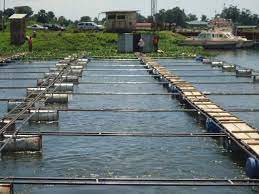

Different farmers around Lake Victoria have engaged in lucrative fish cage farming. For one to start a fish cage farming business, there are two main basics needed; a licence and viable human and monetary resources.
Start-up
For instance, for one to start up a fish cage farm on a water body such as Lake Victoria, he or she needs to get clearance from the district fisheries officer who later forwards an application file to the natural resources and environment officer who does an environment impact assessment.
If cleared, they forward your file to the ministry of Agriculture where a nonrefundable fee of Shs 50,000 is paid for application. The process would take up to Shs500,000 with all paperwork and documentation. It entails the registration of the business entity and prospectus.
To add fingerlings
On adding the fingerlings (young fish) in a cage, one should also add mosquito nets so as to protect the fingerlings from escaping since they are too small for the cages and the fish nets. At the start, each fingerling bought measures 0.5 or 0.8 grammes. For one to buy 8,000 fingerlings, he or she would spend up to Shs 1.6m.
In the first three months, a fish cage farmer would buy powdered feeds, each kilogramme at Shs 6,000 with a high protein rate that would help fish grow faster. The feeds would include maize bran and cotton, premix silver fish or even soya among other items with the right percentage of inclusion. The first three months would have three million shillings costed in feeding the fingerlings.
The other kind of food used is crumble. Each kilogramme at Shs3,000 and would be used for about two months. Later, use fillet for about 200kilogrammes each month at Shs2,200 for about five months. At this stage, the fish would be mature with between 500grammes to a kilogramme.
In one year, the cages would be able to produce up to 3.5 tonnes. However, most of the fish would remain and later sell in the next two months. “After disposing of all the fish, one would remain with a profit margin of Shs25 million and the initial assets used would still be useful for another start up fish cage farming project.
Challenges
Fish farming only faces challenges such as limited security, poor feeds and fish species. But such challenges could be avoided if the farmers learn the suitable feeds for their farms. Also, one has to learn how to mix the feeds themselves.
You can easily use the correct measurements and deliver the best fish feeds. One usually needs to go with an expert to get the best fingerling if he or she is to start a good fish cage farm that would have high productivity.
 Contact Jaguza Support
Contact Jaguza Support